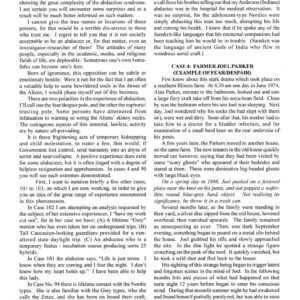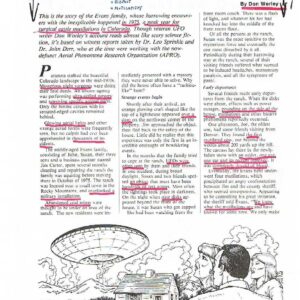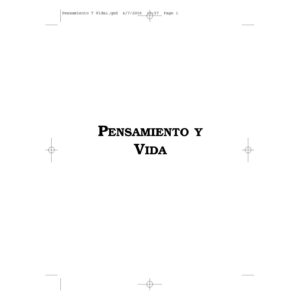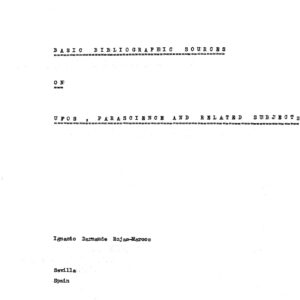Air Force Deception Program
- Descripción
Descripción
Air Force Deception Program
(8154) Fri 30 Sep 94 8:20p
By: John Powell
To: All
Re: Usaf Afi 10-704
St: Local Sent
——————————————————————————
BY ORDER OF THE AIR FORCE INSTRUCTION 10-704
SECRETARY OF THE AIR FORCE 25 MARCH 1994
[USAF] Operations
[seal]
MILITARY DECEPTION PROGRAM
_____________________________________________________________________
This instruction implements AFPD 10-7, Command and Control Warfare, by
providing guidance for planning, coordinating, and executing tactical
military deception. This instruction does not apply to Air Force
Education and Training Command and Air Force Materiel Command. For a
comprehensive review of deception above the wing level, see Chairman,
Joint Chiefs of Staff, Instruction (CJCSI) 3211.O1, Joint Military
Deception. Use CJCSI 3211.01 when involved in joint operations, joint
exercises, or Joint task forces.
SUMMARY OF CHANGES
This is the initial publication of AFI 10-704, substantially revising
AFR 55-49.
1. Authority To Plan and Execute Tactic Military Deception (TD):
1.1 Under the authority of Commanders in Chief (CINC), tactical
commanders at all levels develop and employ TD tactics during
peacetime, crisis, or war.
1.2. The commander authorized to review TD supported operations plans
(OPlans), not requiring CJCS review, will review and approve the
TD plan.
1.2.1. For all joint deception, commanders must comply with CJCSI
3211.01
1.2.2. Approval authority for unilateral USAF deceptions is the
supported major command (MAJCOM). MAJCOMs must ensure
deception plans are forwarded to the Joint Staff, through HQ
USAF, for approval if it meets any of the criteria listed in
CJCSI 3211.O1, Enclosure B, Policy, paragraph 2, Joint
Military Deception Policy.
2. TD Program Objectives:
2.1. Support theater operations plans including tactical levels of
war using conventional and unconventional forces.
2.2. Support contingency operations and plans including emergencies
caused by terrorists or subversives, and situations requiring a
military response.
2.3. In war or contingency, enable commanders to:
* Achieve surprise.
* Enhance security.
* Seize the initiative by actively misleading the enemy tactical
commander.
* Destroy an adversary’s command and control capabilities.
2.4. In peacetime. deceive by conditioning opposing commanders to
expect false procedures, capabilities, limitations, and tactics.
2 5. Involve the TD Working Group and intelligence personnel.
2.6. Target a person, usually the enemy’s tactical or operational
commander.
2.7 Enable commanders to routinely develop and implement TD
exercises.
2 8. Enhance combat effectiveness and contribute to the success of
military operations.
2.9. Combine deception with other Command and Control Warfare
activities:
* Operations security (OPSEC).
* Psychological operations (PSYOPS).
* Electronic warfare (EW).
* Destruction of enemy capabilities.
2.10. Support normal operations, exercises, crises, and wars with
efficient planning, coordinating, and execution of TD.
2.11. Follow security procedures described in:
* TD Program Security Classification Guide.
* AFI 31-4O1, Information Security Program Management (formerly
AFRs 205-1 and 205-43).
* AFPD 31-4, Information Security.
* CJCSI 3211.01.
3. Responsibilities:
3.1. Directorate of Forces, Special Operations Division (HQ
USAF/XOOFU):
3.1.1. Serves as the office of primary responsibility (OPR) for TD.
3.1.2. Provides policy guidance for planning, coordinating. and
executing TD operations.
3.1.3. Manages forces, personnel, materiel quantities, and costs.
3.1.4. Provides liaison with the Joint Staff.
3.1.5. Augments supported or supporting commands, as needed, during
contingencies, exercises, and provides staff assistance.
3.1.6. Helps MAJCOMs develop and maintain their TD programs.
3.1.7. Coordinates MAJCOM TD efforts to prevent conflicts with other
organizations.
3.1.8. Publishes the Air Force TD Program Security Classification
Guide.
3.1.9. Publishes an annual roster listing US Air Force MAJCOM and
numbered Air Force (NAF) TD officers and noncommissioned
officers (NCO).
3.1.10. Coordinates, through the Office of the Vice Chief of Staff Air
Force, Disclosure Branch (CVAII), the release of any TD
information to foreign nationals.
3.1.11. Compiles the annual TD activity report required by CJCSI
3211.O1.
3.1.12. Maintains archives of TD operations.
3.1.13. Publishes and disseminates case studies detailing lessons
learned about TD.
3.1.14. Integrates such lessons learned into Air Force TD training
course.
3.2. Directorate of Plans, Technical Plans Division (HQ USAF/XOXT):
3.2.1. Serves as OPR for the Command and Control Warfare functions of
PSYOP and OPSEC as they relate to TD.
3.2.2. Reviews TD doctrine and guidance as they relate to PSYOP and
OPSEC.
3.2.3. Documents and submits PSYOP and OPSEC funding requirements as
they relate to TD to HQ USAF/XOFU.
3 3. MAJCOMs:
3.3.1. Coordinate all MAJCOM peacetime TD to prevent conflicts with
other activities.
3.3.2. Develop and maintain capabilities for planning and conducting
TD.
3.3.3. Adapt TD programs to support specific MAJCOM missions.
* Publish a MAJCOM-specific supplement to this instruction.
* Send a copy of the supplement to HQ USAF/XOFU, 1480 Air Force
Pentagon, Washington DC 20330-1480.
3.3.4. Conduct TD exercises during peacetime and as required for
mission success during periods of crisis and wartime.
3.3.5. Ensure that their planning staff deliberately considers TD
during all stages of operational and exercise activities.
3.3.6. Ensure that all NAFs and wings are familiar with the command TD
program and objectives, and comply with this instruction.
3.3.7. Appoint a command TD officer.
3.3.8. Conduct educational and training programs and exercises to
develop proficiency in the planning, execution, and use of TD.
3.3.9. Give exercise participants from other MAJCOMs the mission and
TD objective at least 150 days prior to the exercise.
3.3.10. Complete a TD after-action report for all Joint Chiefs of
Staff, MAJCOM, and NAF exercises. Submit the report to HQ
USAF/XOFU not later than 45 days after exercise termination
date. Establish procedures to capture lessons learned from
unit TD training and TD activity.
3.3.11. Develop TD annexes to OPlans and contingency plans. Review TD
annexes prepared by subordinate units to prevent conflicts
with other units.
3.3.12. Document and send TD funding requirements, including equipment
and personnel, to HQ USAF/XOFU.
3.3.13. Maintain a list of all primary and alternate MAJCOM
subordinate TD officers and NCOs.
3.3.14. Submit an annual report of RCS: HAF-XOO(A) 9128, Tactical
Deception Activities.
* Follow the end-of-year report format in the TD Security
Classification Guide.
* Submit the report to HQ USAF/XOFU not later than 1 October.
* Because this report has emergency status code C-2, continue
normal reporting during emergency conditions, and continue
reporting by message during MINIMIZE.
BUSTER C. GLOSSON, Lt General, USAF
DCS/Plans and Operations
Supersedes AFR 55-49, 26 May 1989
OPR: HQ USAF/XOFU (Maj Joe Collins)
Certified by: HQ USAF/XO (Lt Gen Buster C. Glosson)
Pages: 3/Distribution: F
— FMail/386 0.98a
* Origin: Absence of Evidence is not Evidence of Absence BBS (9:1010/4)


















































